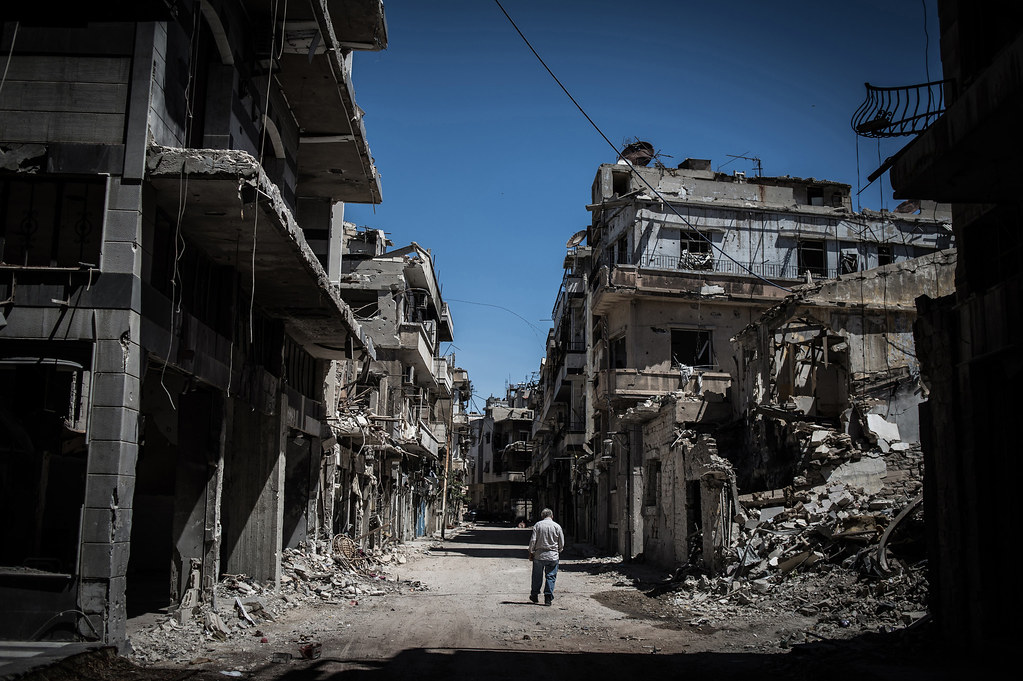Anna Fenton-Jones, BA Middle Eastern Studies
China continues to expand its Belt and Road Initiative into the Middle East, finalising a deal with Syria that President Bashar al-Assad’s government hopes will allow it to begin the process of rebuilding the country after more than 10 years of civil war.
A meeting between the Head of Syria’s Planning and International Cooperation Commision, Fadi Al-Khalil, and the Chinese Ambassador to Syria, Feng Biao, on 12 January has seen the two sign a Memorandum of Agreement to bring Damascus into Beijing’s Belt and Road Initiative (BRI).
Khalil stressed the importance of the two countries’ historical ties to the deal, commenting that ‘Syria was one of the foundational nations of the ancient route, especially the cities of Aleppo and Palmyra, and therefore we shall revive this road through joining this initiative.’
The signing comes during a period of increasing Chinese diplomatic activity in the Middle East. Foreign ministers from various Gulf states and the Secretary-General of the Gulf Cooperation Council, Nayef bin Falah al-Hajrah, are currently in China to discuss energy security and a potential free trade agreement. Foreign Minister Wang Yi spent much of July touring North Africa and the Middle East where he met with the chief of the Arab League to discuss Syria’s readmittance.
The regional body expelled Syria a decade ago over the Government’s brutal crackdown on pro-reform protesters, but an official at the Arab League said in November ‘The decision to suspend Syria’s membership [in 2011] was hasty and contributed to the complexity of the situation in Syria.’
Over 130 countries have signed BRI-related Memorandums of Understanding to date. Syria will join the China – Central Asia – West Asia Economic Corridor programme as part of an offshoot that includes Iran and Iraq. Significantly for Syria, officials from Iran and China signed a 25 year cooperation agreement in March. Leaked documents suggest China could invest up to $400bn into Iranian infrastructure projects including a redevelopment of the port of Jask and new rail networks linking Istanbul to Islamabad via Tehran.
Detailed plans for the deal with Syria have yet to emerge. There is some speculation that support from Beijing will allow President Assad to revisit the Five Seas Strategy (FSS) that he championed before the outbreak of civil war in 2011.
The FSS involved the construction of rail, road, and energy networks between the Mediterranean, Persian Gulf, Black Sea, Red Sea, Caspian Sea, and Syria. In 2009 Assad commented on the project, ‘Once we link these […] seas, we become the unavoidable intersection of the whole world in investment, transport, and more.’
“Crucially, the Syrian government hopes the BRI agreement will allow it to rebuild much of the estimated $120bn worth of damage done to its cities and infrastructure after more than 10 years of civil war.”
Crucially, the Syrian government hopes the BRI agreement will allow it to rebuild much of the estimated $120bn worth of damage done to its cities and infrastructure after more than 10 years of civil war. The conflict led to the forced migration and internal displacement of over half the population – the world’s largest refugee crisis. 80% of Syrians who remain in the country live below the poverty line amongst the complete collapse of healthcare and other essential services.
Assad has declared victory in the conflict, despite rebels retaining control of large portions of northern Syria. Fighting has decreased significantly since a ceasefire in opposition stronghold Idlib was agreed to by Assad’s ally Russian President Vladimir Putin and Turkish President Reycap Egordyan in 2019.
In December, the Syrian Observatory for Human Rights reported that almost 4,000 people, including 1,505 civilians, were killed over the course of 2021. This added to the total of 350,000 verified deaths since the beginning of the conflict. The UN has commented that the actual number of deaths is significantly higher.
Photo Caption: Return To Homs (Credit: Chaoyue Pan).
